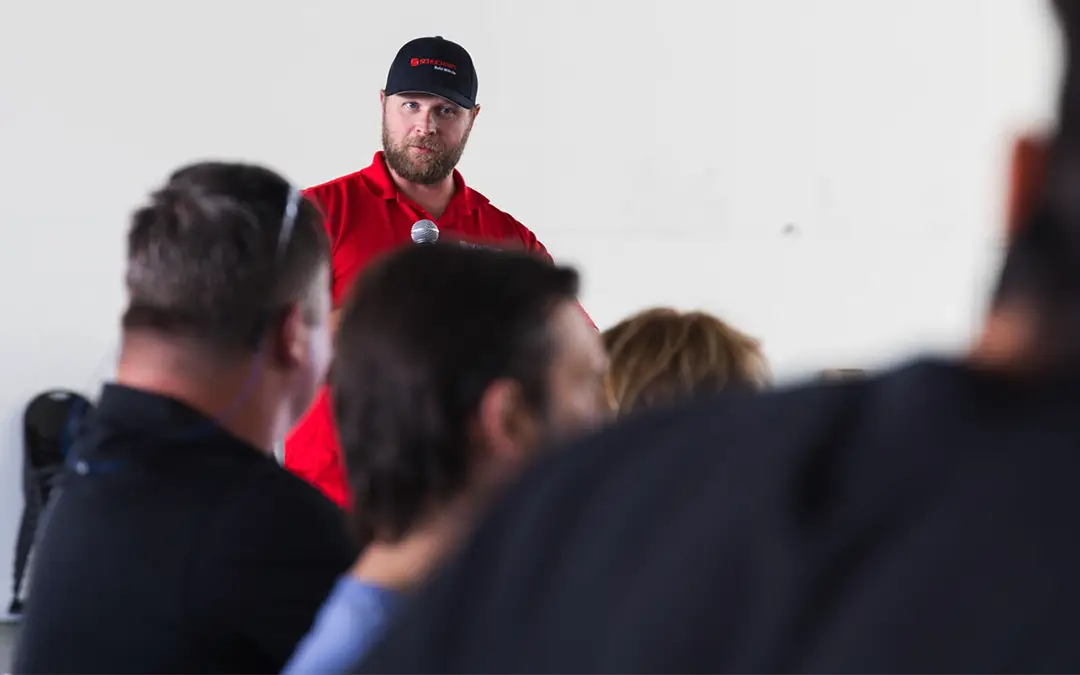In the dynamic world of construction, the significance of safety looms large. Yet, achieving a genuine commitment to safety that transcends compliance and paperwork often proves elusive. How can we instill a culture of safety that permeates every level of our organization and goes beyond the basics of safety protocols?
To delve into these questions, I spoke with Dave Hathaway, Schuchart’s Safety Director, who has been an integral part of the Schuchart family for a remarkable 17 years. Dave’s journey began as a Foreman, and over the course of these 17 years, he ascended to the role of Superintendent, ultimately assuming the crucial mantle of Safety Director.
A strong safety education program hinges on structured processes, consistent communication, and readily available support. Dave characterizes Schuchart’s program as a blend of training, hands-on exercises, toolbox talks, safety manuals, and certifications, all geared towards equipping individuals with the knowledge and skills to identify and mitigate hazards, respond to emergencies, and cultivate a safety-first culture.
A robust safety program isn’t complete without continuous support and resources. This includes mentoring, feedback channels, recognition, medical assistance, wellness initiatives, safety committees, and access to external expertise. These elements are “crucial in ensuring that employees are not only well-prepared but also well-informed about safety in the workplace”, according to Dave.
One often-underestimated facet of safety is mental well-being. While many construction incidents result from accidents or negligence, some can be traced back to employees grappling with mental distractions. These distractions can compromise their ability to focus and remain fully engaged at work. Dave’s commitment goes beyond traditional safety education; he seeks to nurture a culture that values mental well-being. By providing resources and fostering an environment where employees can openly share their challenges, teams are better equipped to support each other comprehensively.
In the fast-paced construction industry, the pressures of efficiency, tight schedules, and budget constraints often lead to the temptation to cut corners on safety protocols. However, Dave is quick to remind us that safety should always be the top priority. Even when time is of the essence, safety cannot be compromised, as skipping safety measures can have disastrous consequences.
Ensuring a safety-first culture starts at the top, with leaders like Dave leading by example. His actions reinforce the non-negotiable nature of safety, even in the face of demanding timelines and budget constraints.
Inevitably, despite comprehensive safety programs, incidents will occur. The key is to be prepared and view each incident as an opportunity to learn and improve safety processes. After an incident, Dave advises a holistic approach, which includes providing immediate support, clear communication, additional safety training, recognition for affected employees, a gradual return to regular work activities, mental health resources, safety enhancements, and a culture that emphasizes learning from the incident.
Concerning overall morale when an incident occurs, Dave advises that to restore morale, it is crucial to provide immediate support, transparent communication, additional safety training, recognition for affected employees, a gradual return to regular work activities, mental health resources, safety improvements, and a culture that fosters learning from the incident.
Maintaining and enforcing a comprehensive safety program requires a Safety Director who possesses not only leadership skills but also an intrinsic motivation to create a culture of safety. Dave’s philosophy revolves around prioritizing safety, leading by example, involving employees, recognizing safe practices, emphasizing continuous improvement, and fostering a culture of learning from incidents.
In closing, the reason we engage in discussions about safety transcends protocols and regulations. As Dave succinctly puts it, “I deeply care for the individuals I work with.” Safety is not just a mandatory checkbox; it’s a commitment to the well-being of everyone involved. By working together, constantly improving, and embracing innovation, we can fortify our approach to safety in the construction industry, ensuring the protection and welfare of our people. Dave’s insights exemplify the essence of thought leadership in shaping the future of construction safety.

